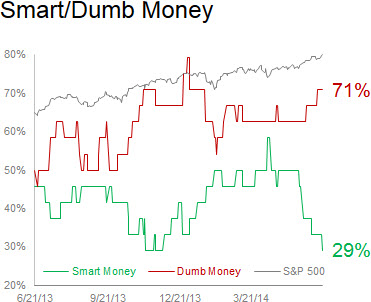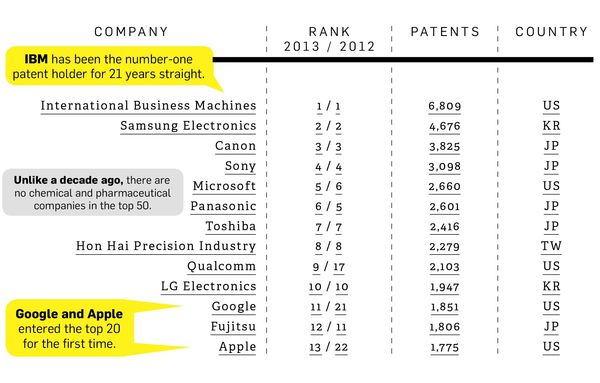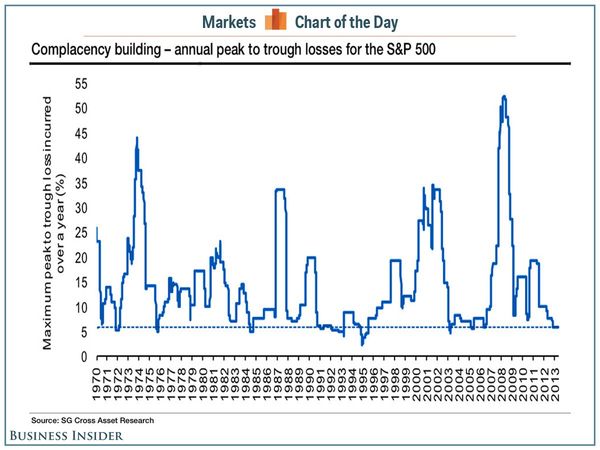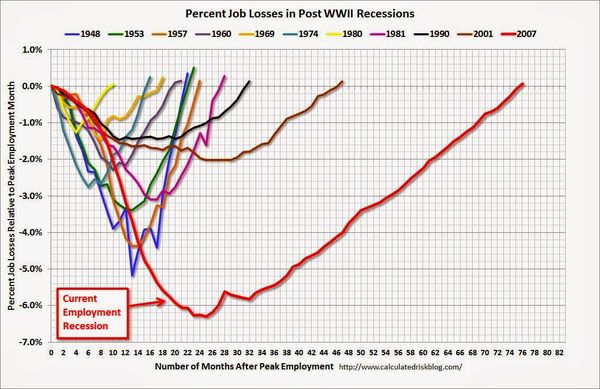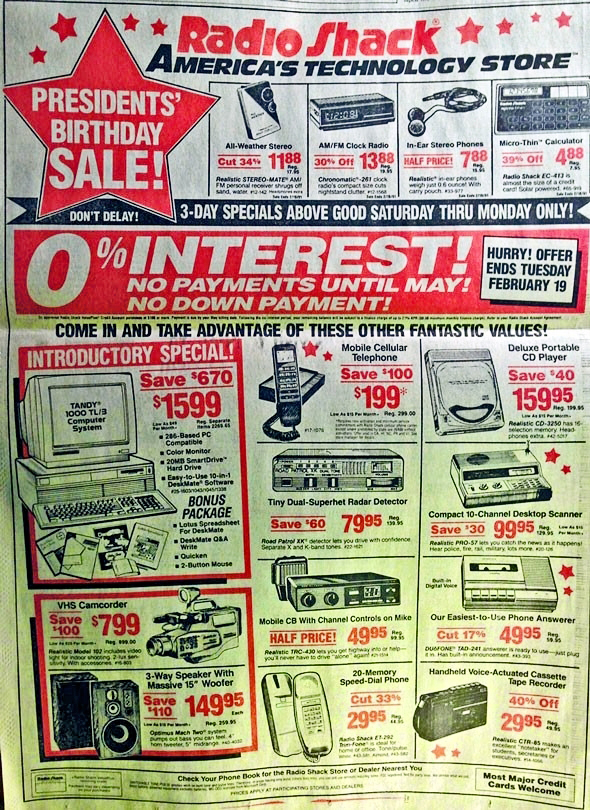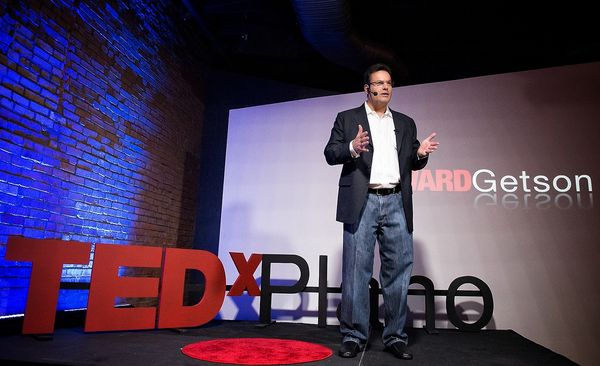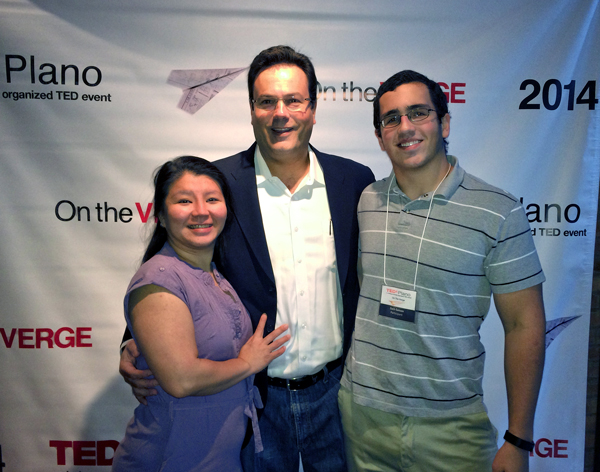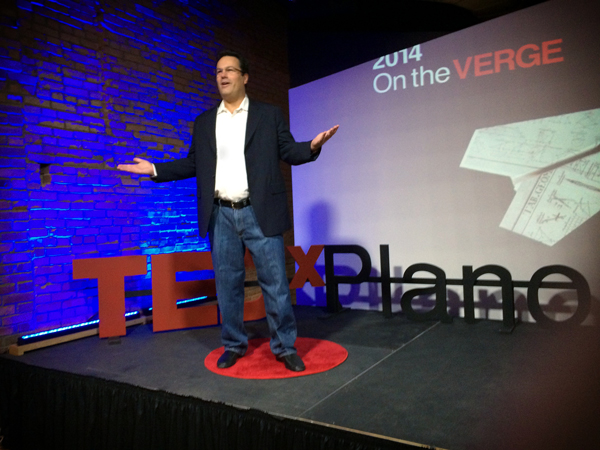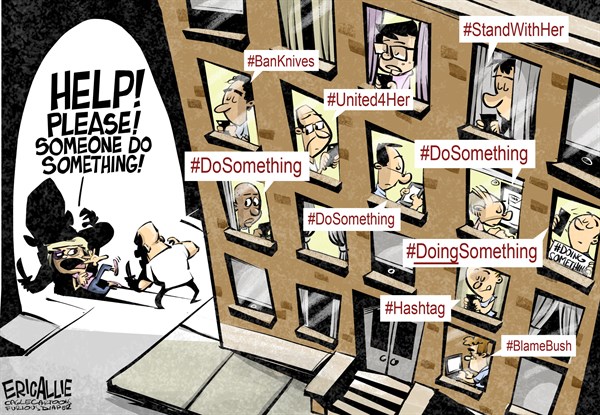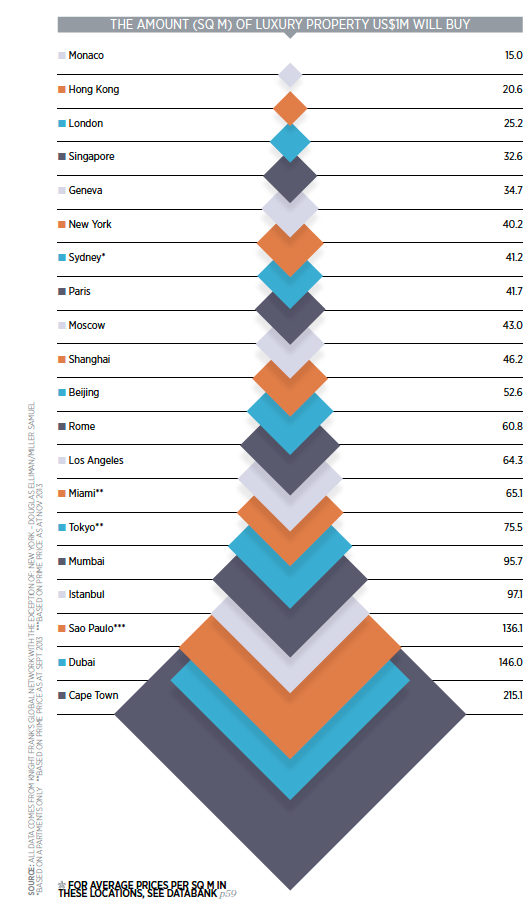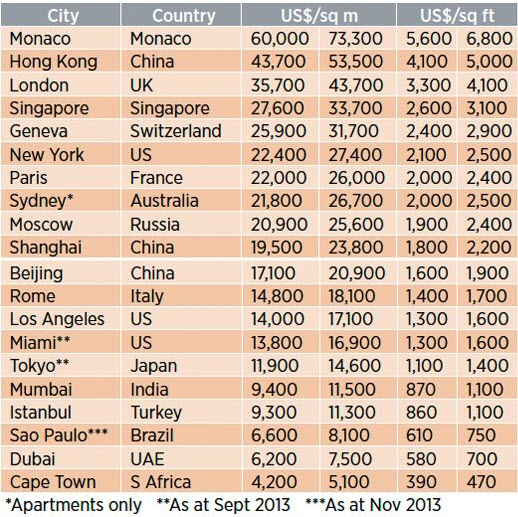Traders are often confronted by mixed signals.
Personally, when I have to choose between something straightforward or something complex – simple is better.
For example, when large "Smart Money" traders show their directional bias, it often pays to follow in their tracks.
Another technique would be to bet against the smaller retail "Dumb Money" traders (because, historically, they are often wrong at major turning points.
However, if I have to decide between following "Smart Money" or doing the opposite of what "Dumb Money" does … then in the absence of other information, following Smart Money wins because it is more straightforward and simpler.
Here is an example.
Smart Money – Dumb Money Confidence Index.
The chart, below, compares the bets made by small traders (a.k.a. the "Dumb Money"), to those of large commercial hedgers (a.k.a. the "Smart Money").
In practice, Confidence Index readings rarely get below 30% or above 70% (they usually stay between 40% and 60%). When they move outside of those bands, it's time to pay attention.
Even more noteworthy is when there is a wide confidence spread between the bets made by the Dumb Money and Smart Money traders. This type of sentiment spread only happens a few times a year. We often get substantial reversals when it happens.
Consequently, you might want to note this chart from SentimentTrader. It shows that the confidence spread is at extreme levels.
Conventional trading wisdom says that Crowds are usually wrong at turning-points. That doesn't mean they are wrong all the time (yet, as discussed, it makes sense to notice when the Smart Money clearly disagrees). So, after such a strong rally, this is the kind of data that causes me to pay closer attention.
Could this be a trend-break? Will Smart Money start actively making Bearish bets?
Price is the primary indicator, and until it breaks down, expect that dips will be met with buying.

